We’re now in the new year and I can look back on December, my second social-media-month (Facebook and Instagram) of posting plants with bees, butterflies, moths or birds as #janetsdailypollinator entries to while away the months until spring. I took a few days off for Christmas, but managed to find 25 pollination partnerships to celebrate.
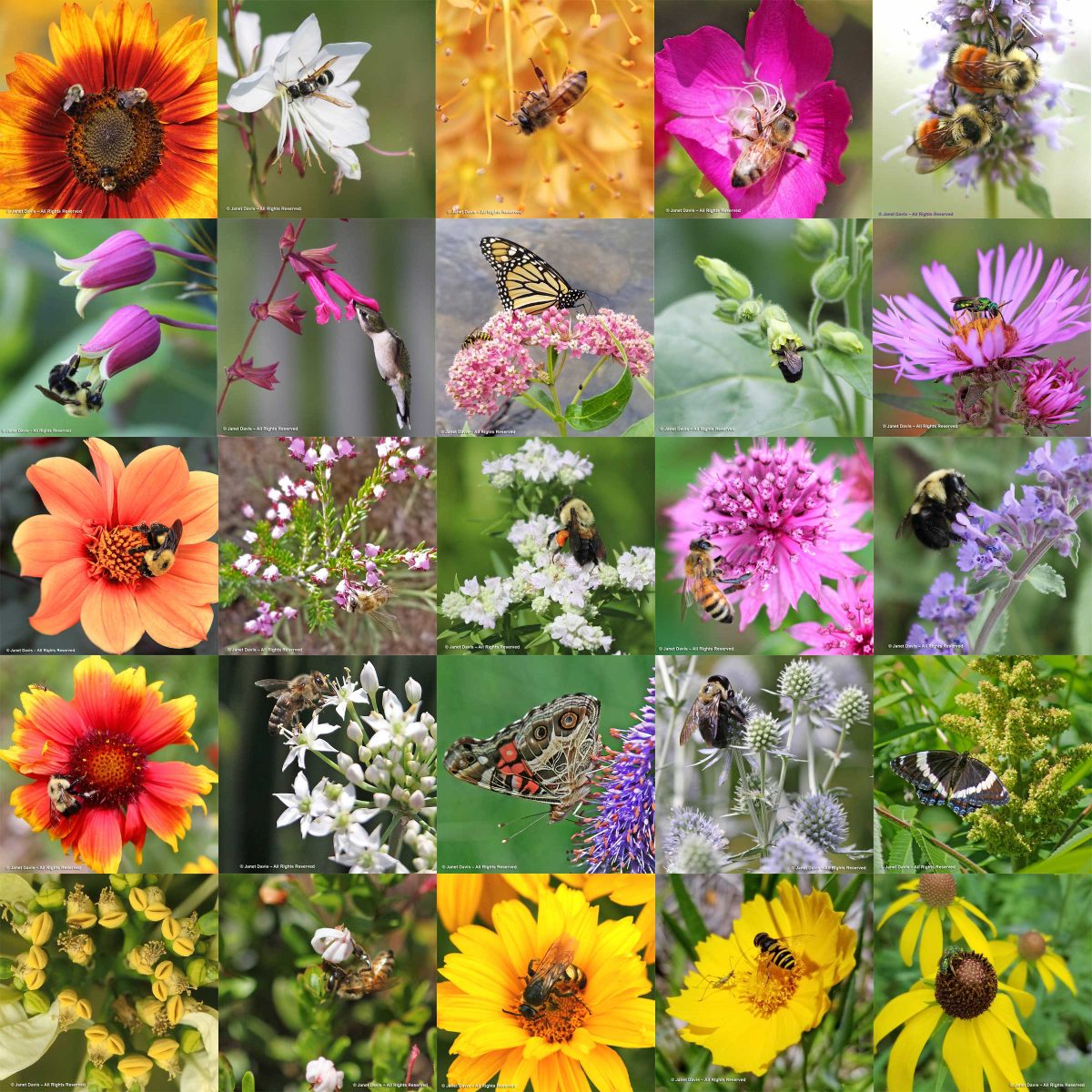
And here they are:
On December 1st snow was falling outside my Toronto office this morning, so I thought it was be a good day to celebrate sunflowers. as #janetsdailypollinator. Bees love the big compound flowers of annual sunflower (Helianthus annuus), as you see with the trio of common Eastern bumble bees (Bombus impatiens) in my photo.
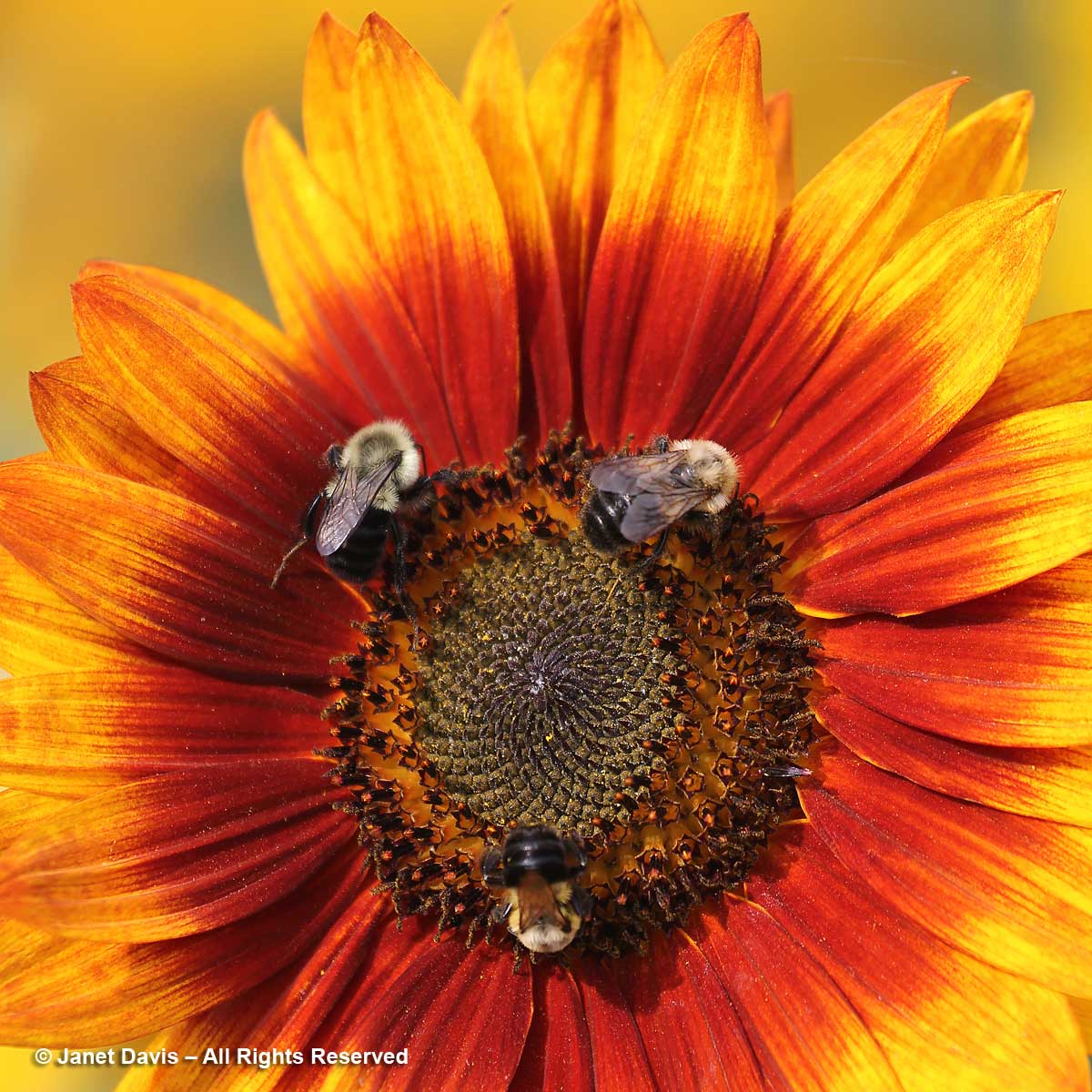
December 2nd had me thinking about gaura with its long wiry stems and its new name Oenother lindheimeri aka Lindheimer’s beeblossom. It was named after the German-born botanist Ferdinand Jacob Lindheimer (1801-1879), a political refugee who fled to the U.S. in 1834 and settled in New Braunfels, Texas on the banks of the Comal River where he collected plants and tried to start a botanical garden. Bees and wasps love gaura, like the potter wasp (Ancistrocerus) below.
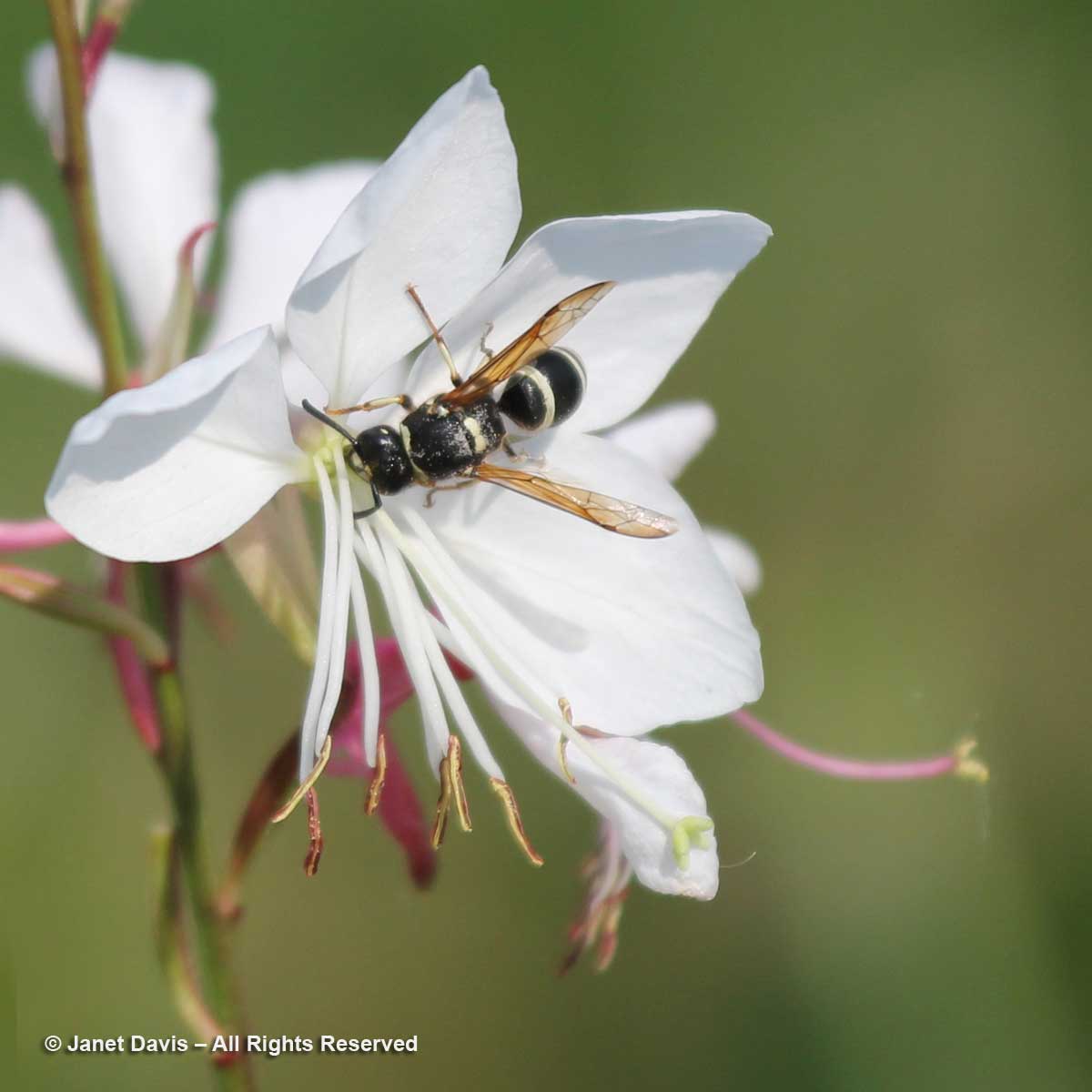
Although I’ve never grown them (those big fleshy roots are very particular as to handling), I photograph hardy foxtail lilies (Eremurus) whenever I see them, my pollinator for December 3rd. And whenever I see them, there are always honey bees, below, or bumble bees working the masses of tiny flowers on the big spikes. Economy of scale works!
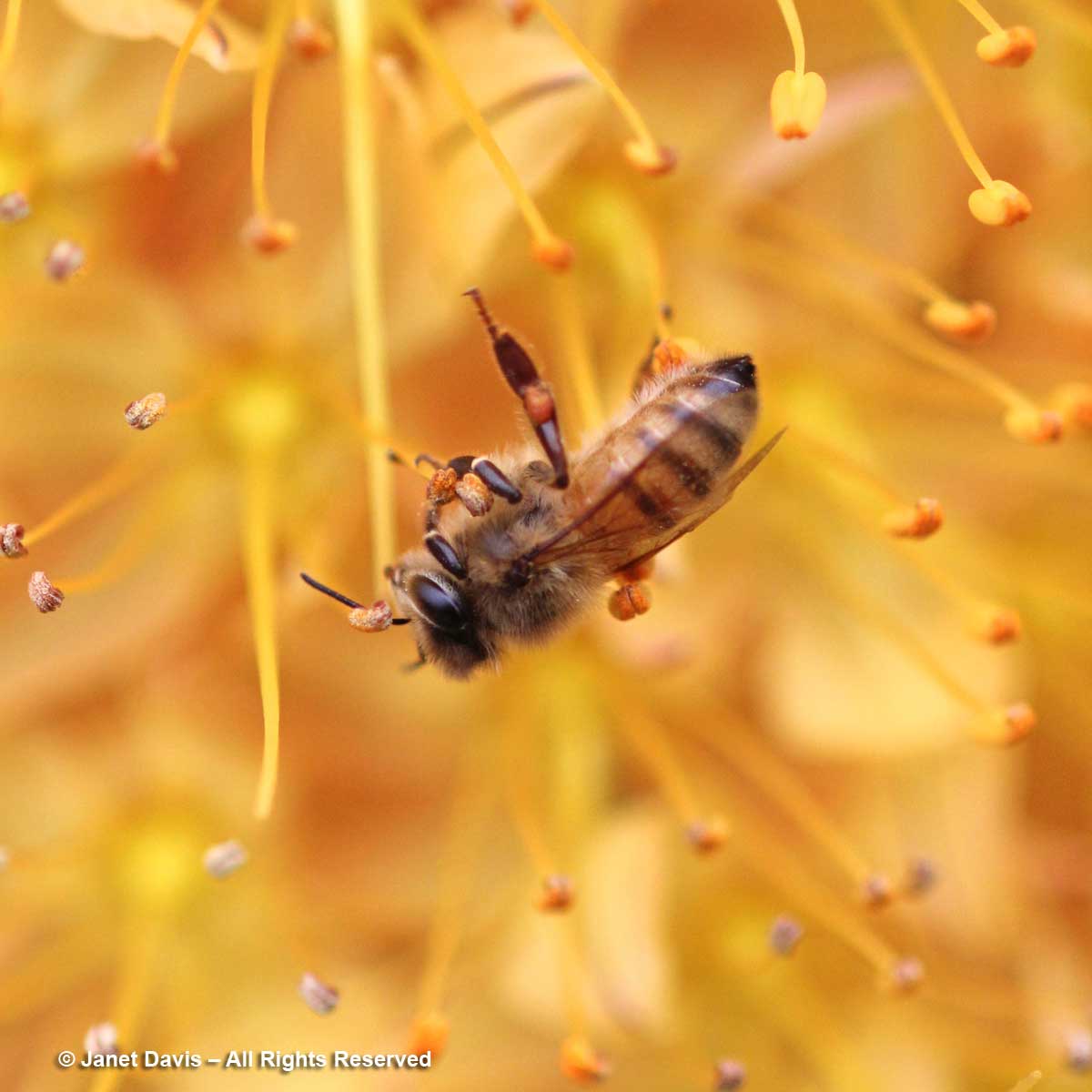
On December 4th,I honoured a lovely northeast native: winecups or purple prairie mallow (Callirhoe involucrata). I grew this from seed one year but it did not thrive, perhaps because of my acidic soil. I must try again – look at that happy honey bee!
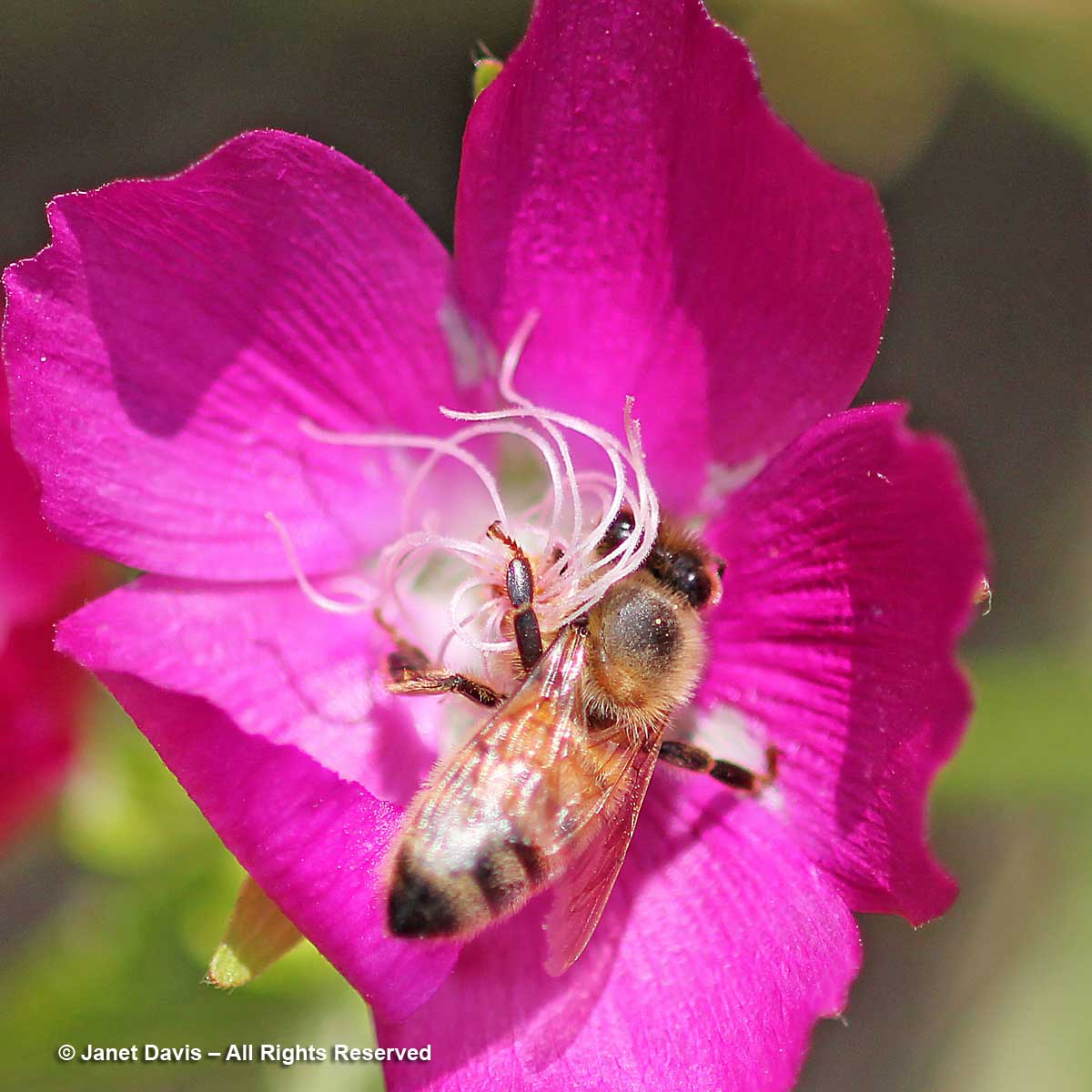
The northeast native perennial anise hyssop (Agastache foeniculum) is a superb pollinator plant, attracting myriad butterflies and bees including the orange-belted bumble bees (Bombus ternarius), below. I celebrated it and related hybrids A. ‘Blue Fortune’ and A. ‘Blue Boa’ on December 5th.
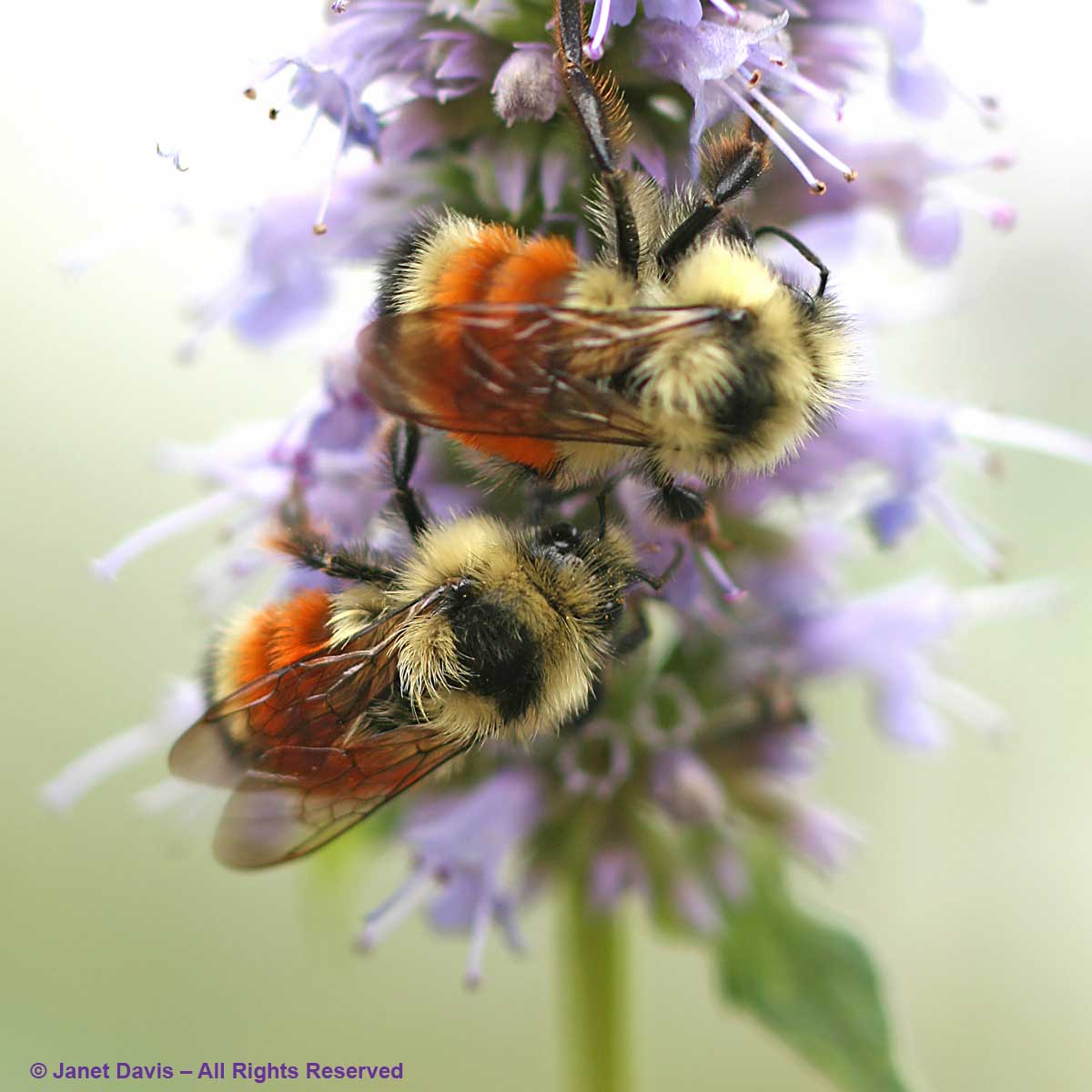
On December 6th I featured the Virginia native whiteleaf leather flower(Clematis glaucophylla) with a big bumble bee foraging in its pretty flowers. That day, I also related the history of the hashtag # and how it works to aggregate posts on the internet.
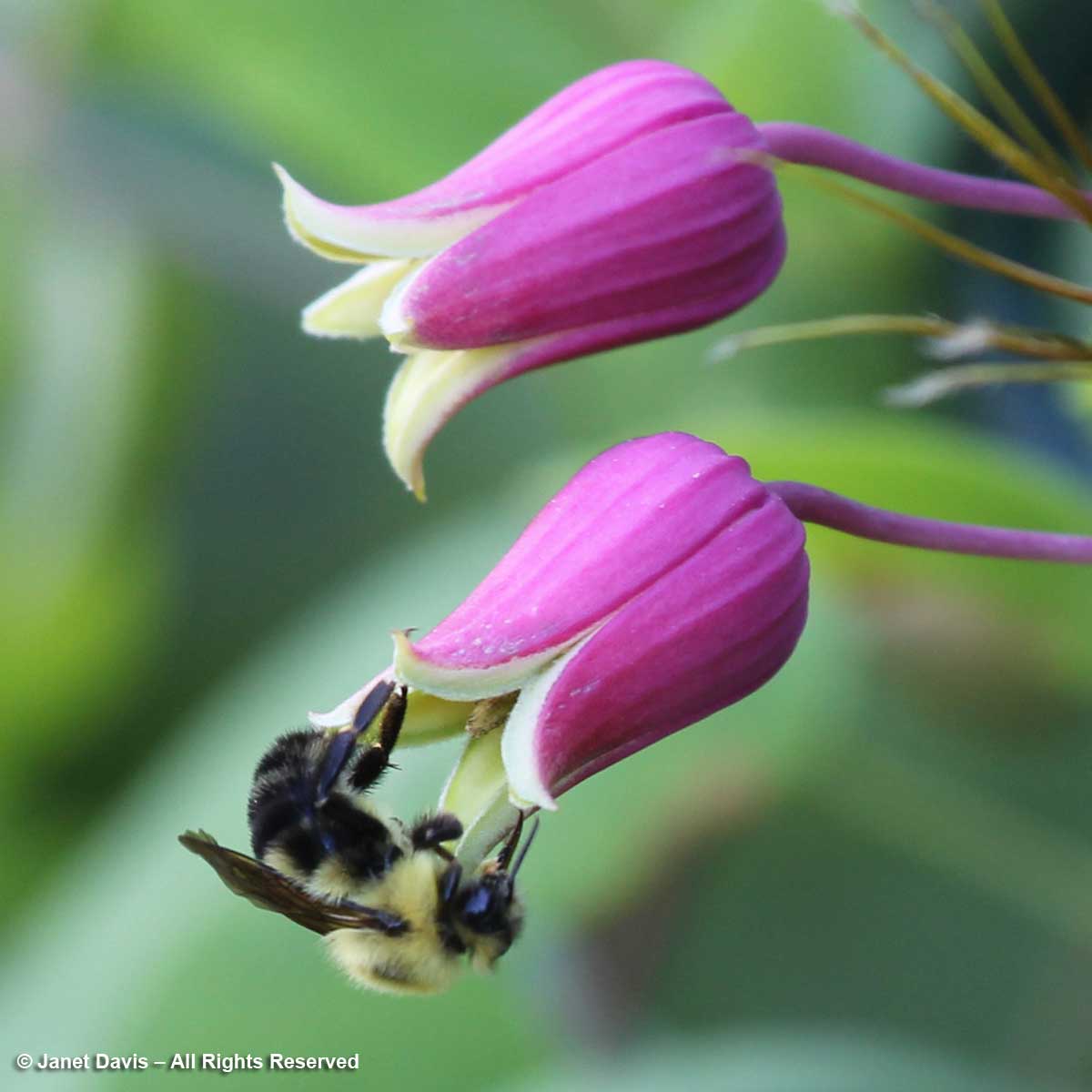
My bird pollinators wanted equal time, so on December 7th I invited a female ruby-throated hummingbird (Archilochus colubris) foraging on the beautiful deep pink Salvia WENDY’S WISH (Salvia hybrid) to be my pollinator pin-up girl.
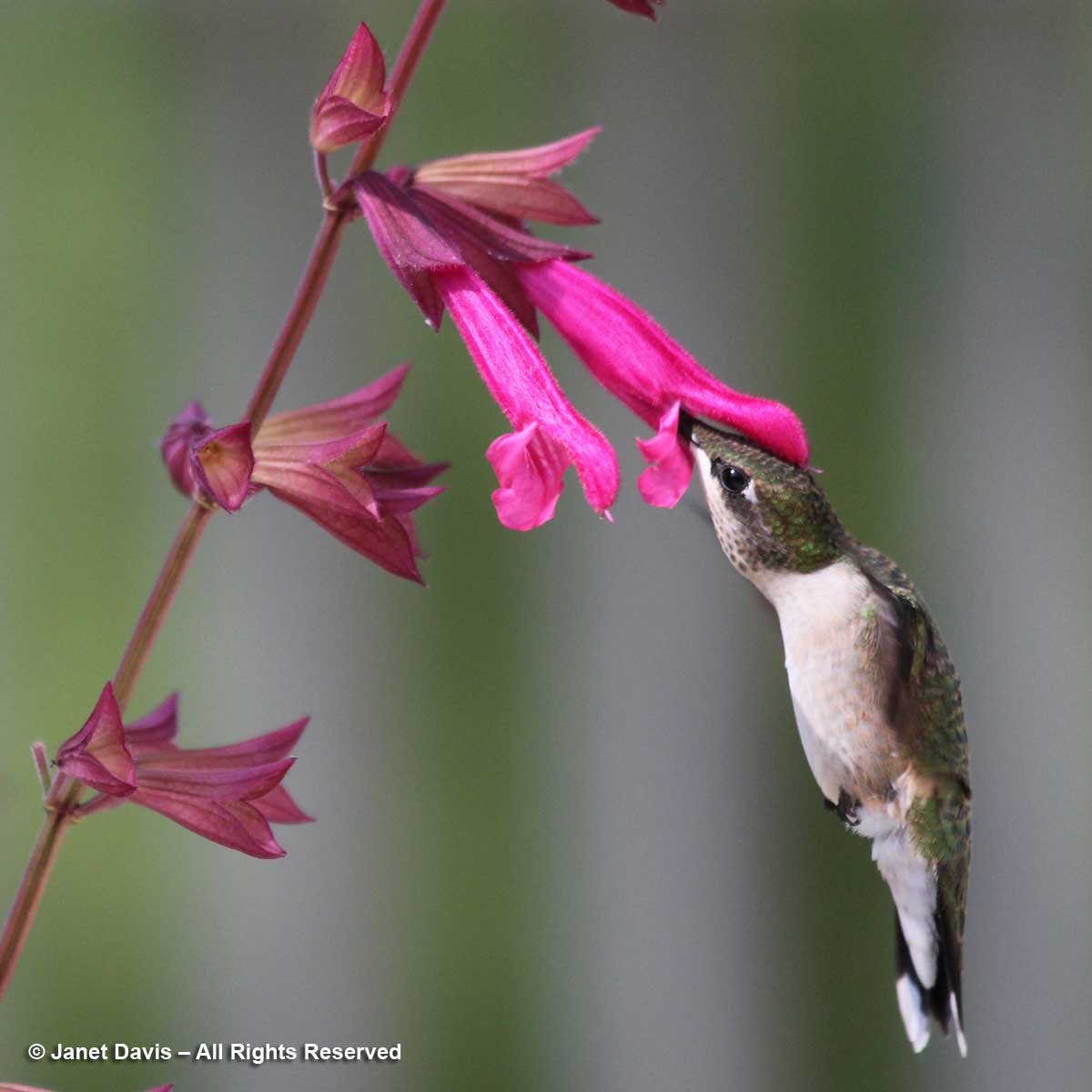
Of the big milkweed clan, the one that grows on Lake Muskoka’s shores is swamp milkweed (Asclepias incarnata). On December 8th, I included it and the white-flowered selection ‘Ice Ballet’ with photos of butterflies, like the monarch below, and myriad bees foraging on the small flowers.
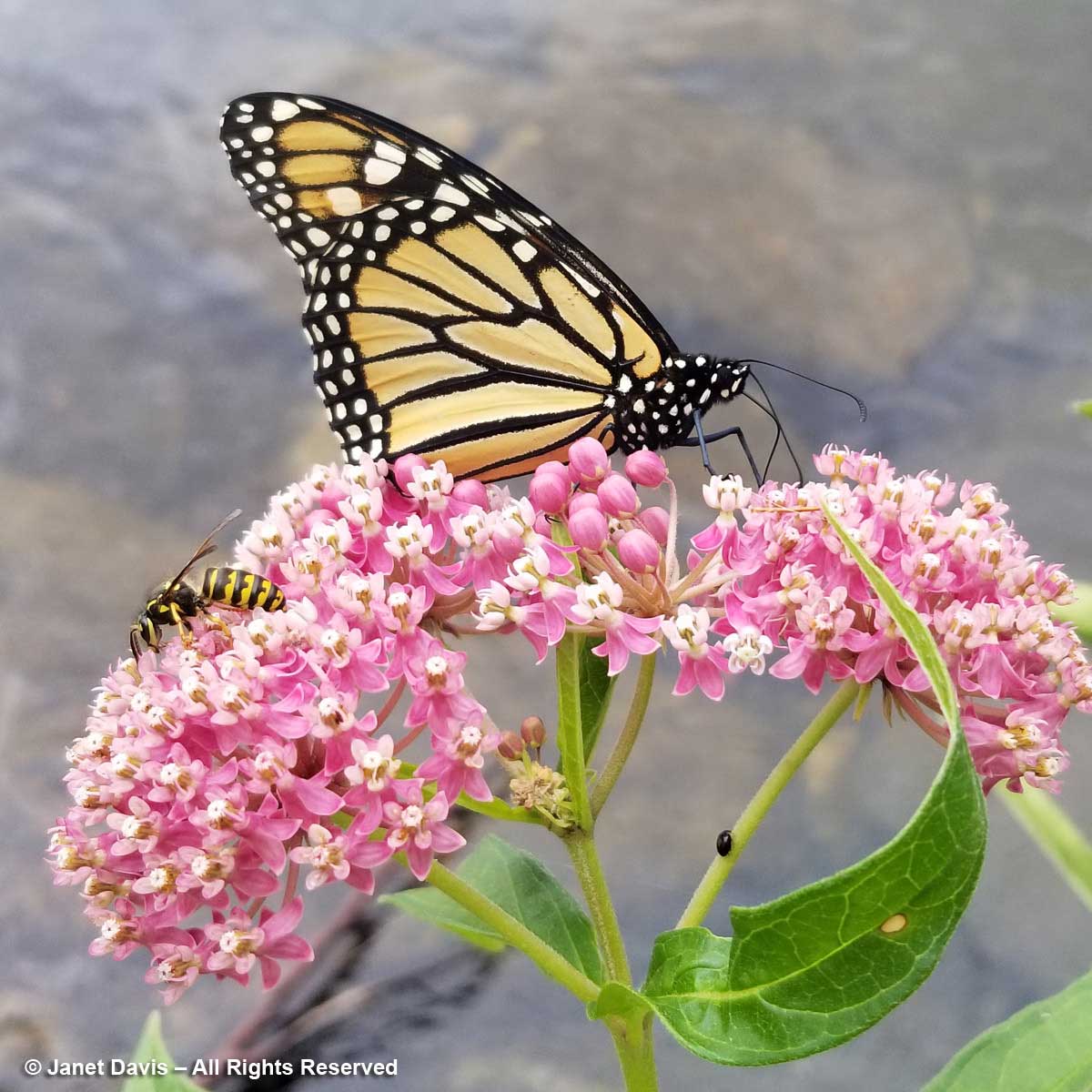
On December 9th I shared a bumble bee foraging on sacred tobacco (Nicotiana rustica) in the Useful Plants Garden at the Montreal Botanical Garden.
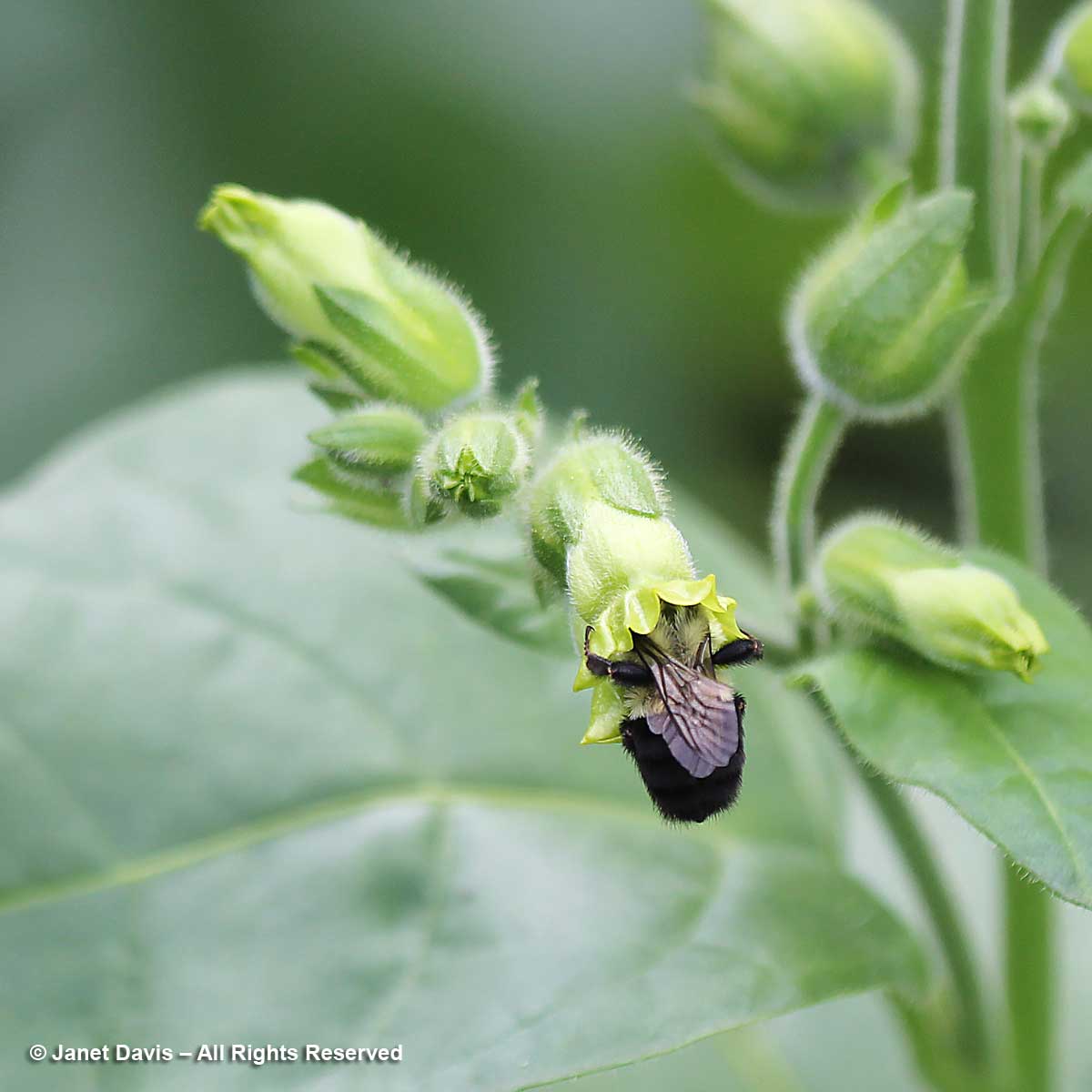
Even though they have a new and tongue-trippy botanical name, asters are wonderful pollinator plants. On December 10th native New England aster (Symphyotrichum novae-angliae) was my daily selection, hosting the tiny pure green gold sweat bee (Augochlora pura)
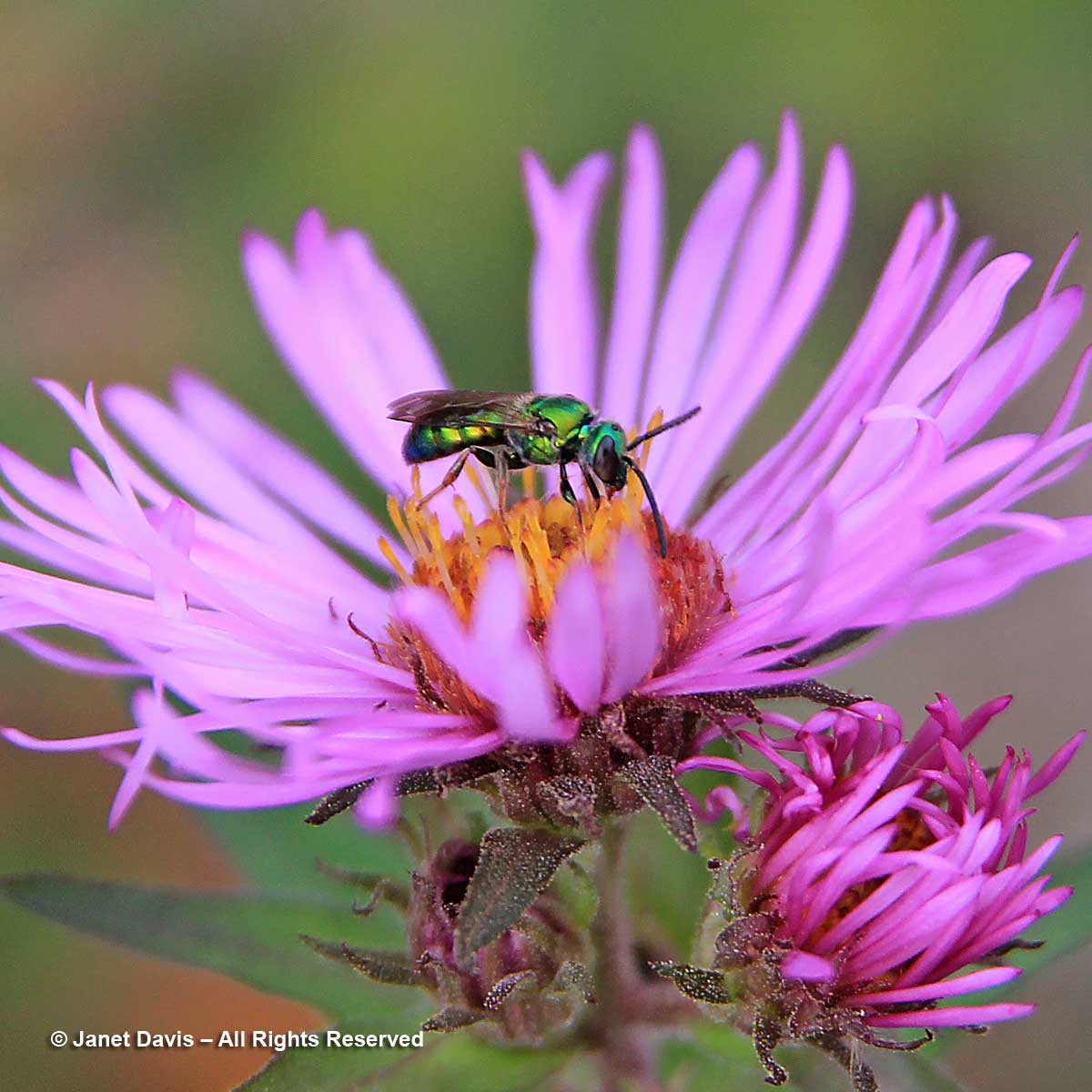
Even if you love those big, blowsy double dahlias, be sure to plant some single dahlias (Dahlia spp.) for the bees. They adore them, as you can see from my photo of the brown-belted bumble bee (Bombus griseocollis) on Dahlia ‘Bishop of Oxford’ on December 11th!
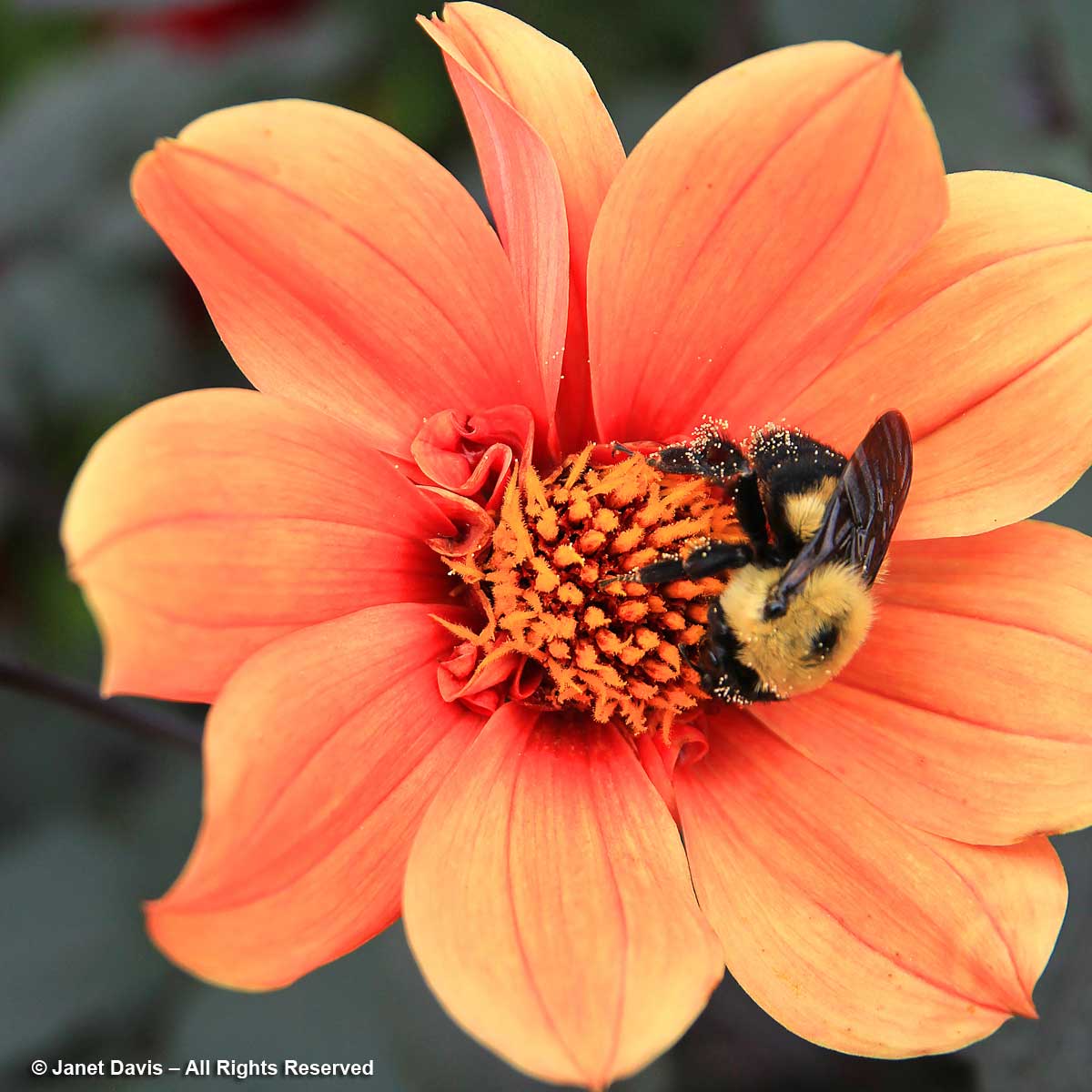
My December 12th post recalled a lovely moment during my 2019 botanical tour of Greece, a visit to a heather-spangled hillside on the Mani peninsula where autumn heather (Erica manipuliflora) was attracting bees. I came home with a jar of autumn heather honey! Did you read my trip journal blog about this wonderful Greek tour with the Greek plantsman Liberto Dario (Eleftherios Dariotis)?
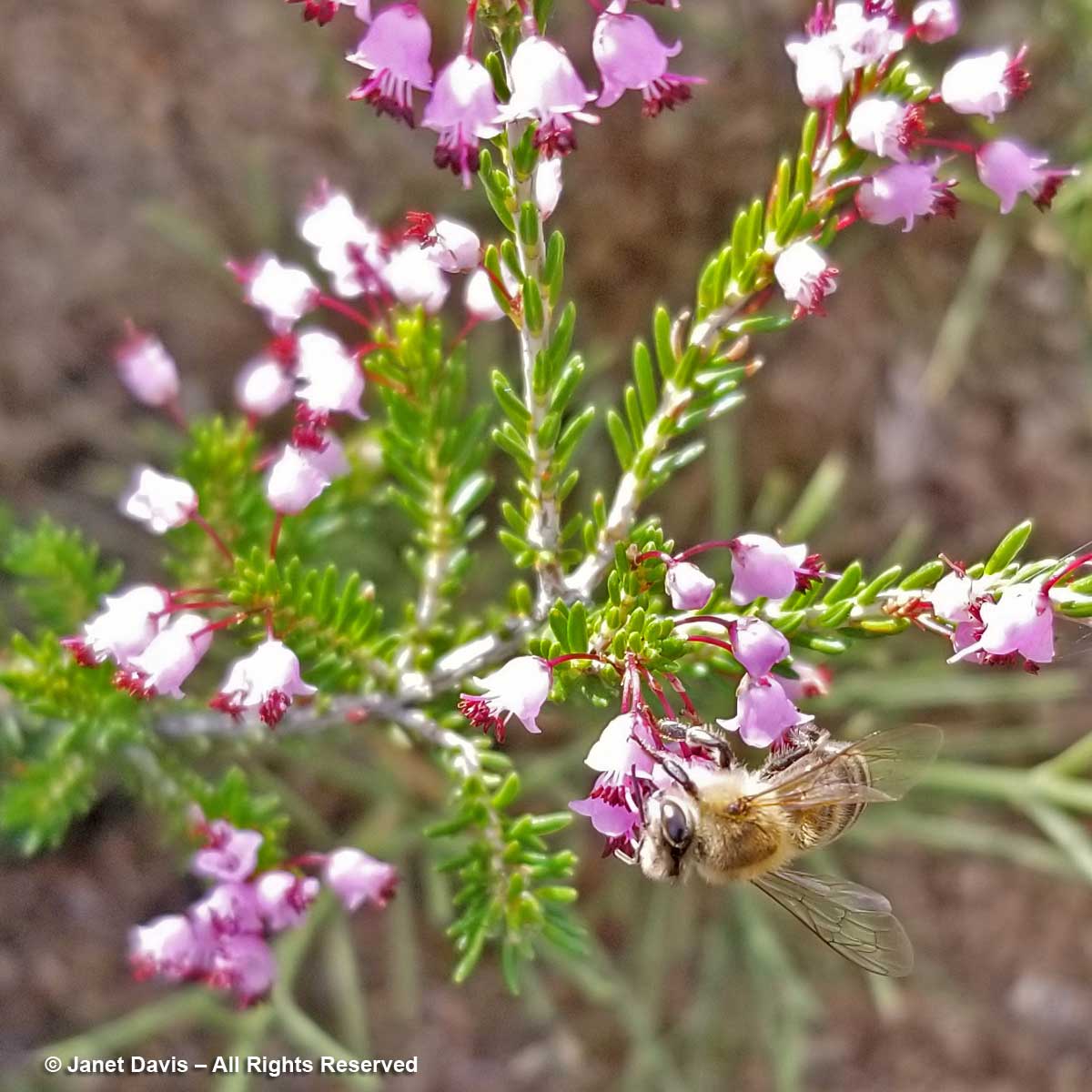
Very few perennials are as attractive to bees as the native mountain mints. My December 13th star was Virginia mountain mint (Pycnanthemum virginianum), photographed at the Legacy Prairie at Niagara Parks Botanical Garden. I wrote a blog about this fabulous garden.
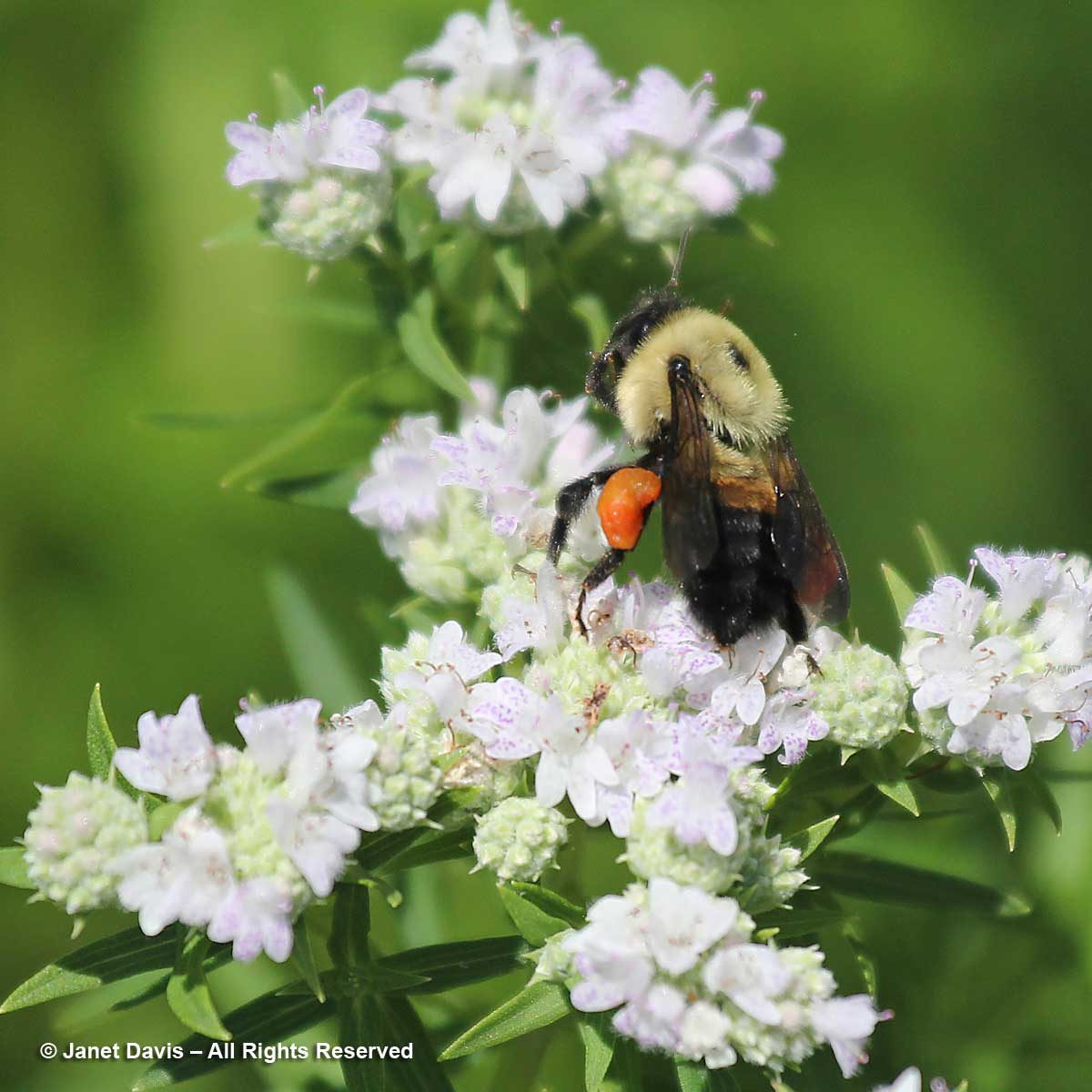
On December 14th I honoured the European perennial masterwort (Astrantia spp.), which always has bees buzzing around it in early summer.
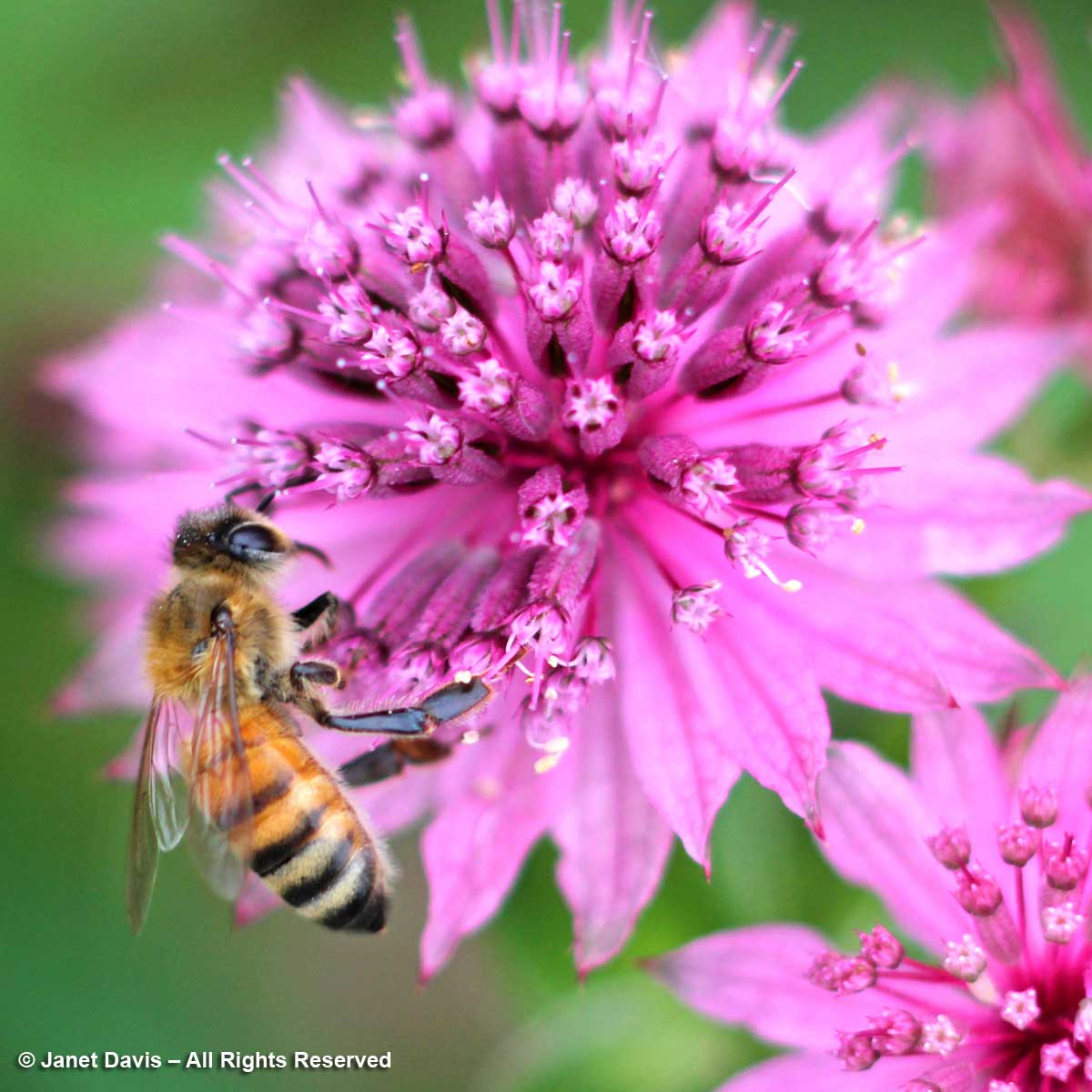
There are so many catmints – all wonderful pollinator lures. Thus my December 15th post featured several photos of low-maintenance catmints (Nepeta spp.), all hosting bumble bees, like the one below on Nepeta ‘Walker’s Low’, or honey bees.
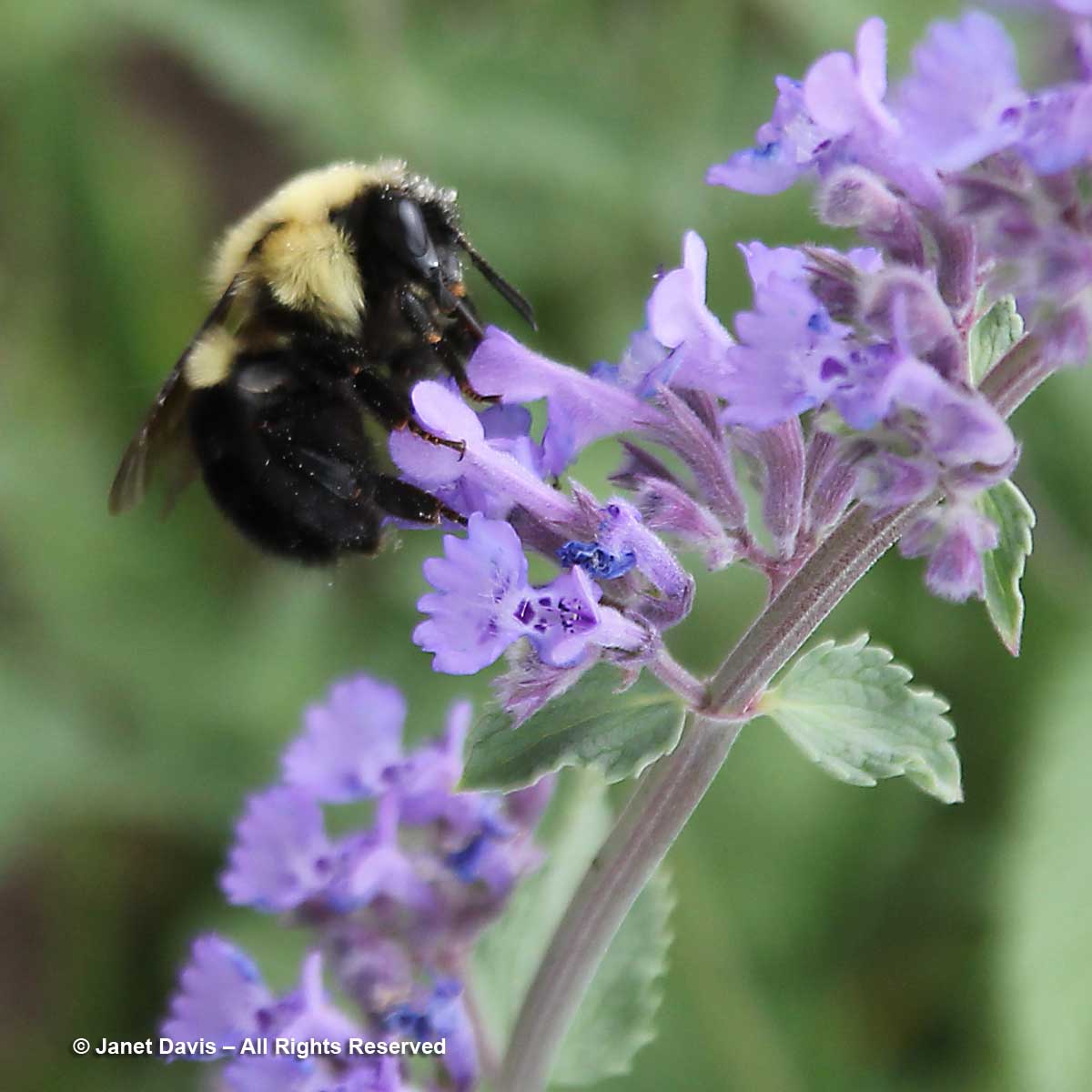
Blanket flowers (Gaillardia spp.) derive their common name from their similarity to red and yellow Navajo blankets in the southwest regions where they are native perennials and annuals. All kinds of bees adore my December 16th pollinator plant, like the bumble bee and hoverfly foraging on Gaillardia x grandiflora, below.
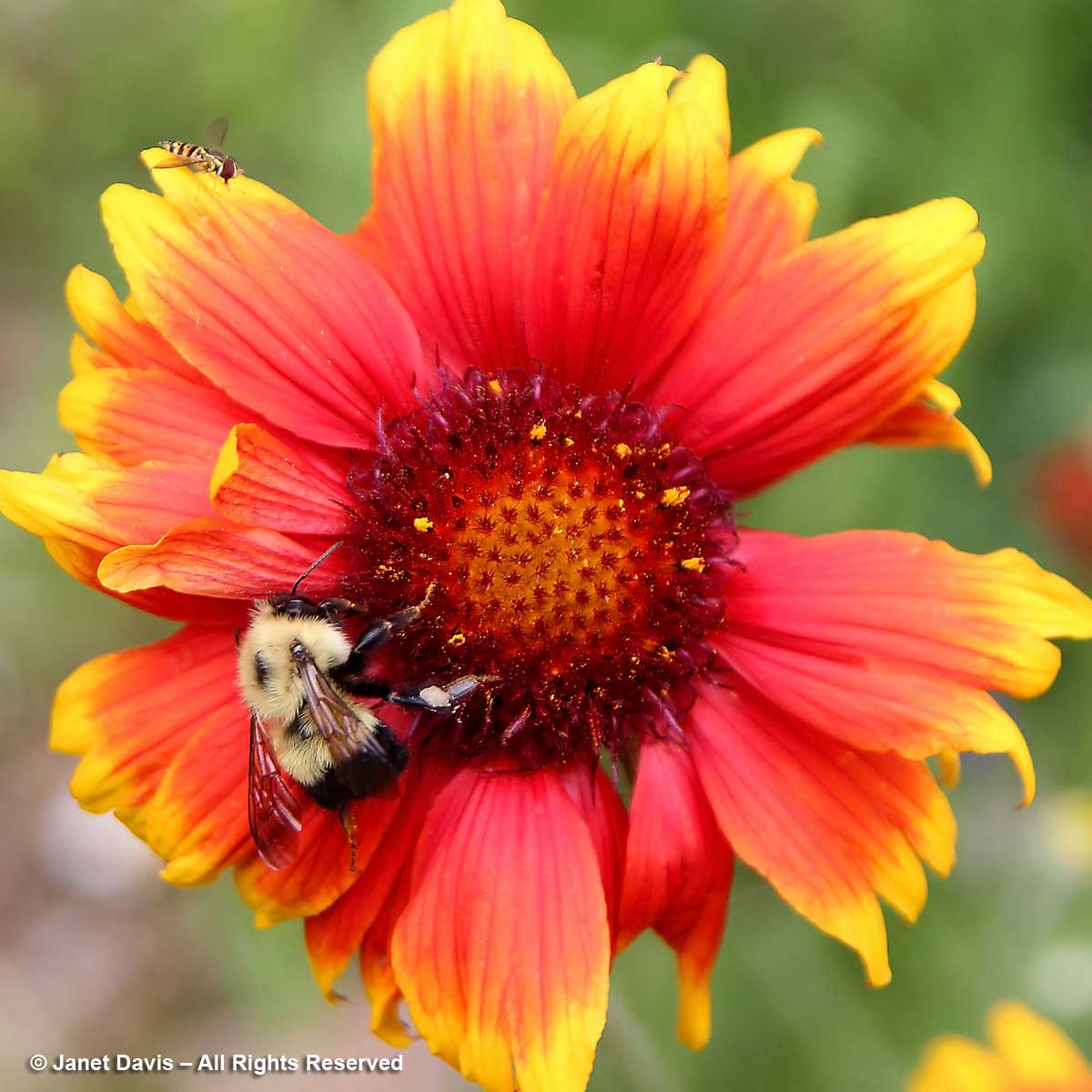
You know there will always be loads of bees around garlic chives (Allium tuberosum), my December 17th entry. A little weedy, yes, but you can always cut the leaves to use in cooking, like the Chinese do!
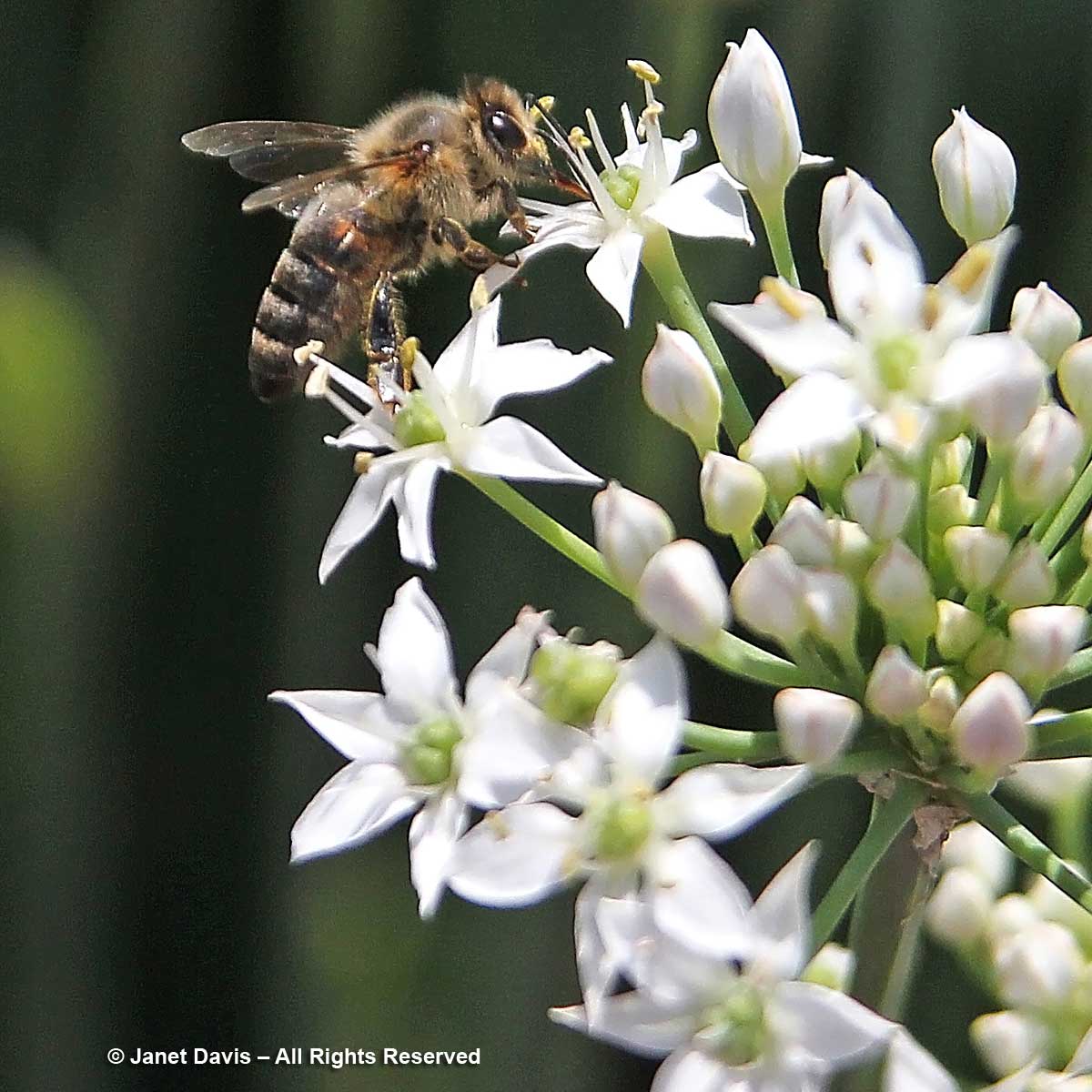
I grow my December 18th pollinator plant Culver’s root (Veronicastrum virginicum) at our cottage on Lake Muskoka, where there are always butterflies or bees on the small flowers up the spike. I especially love the light-purple cultivar ‘Lavendelturm’, but the native species itself is a superb plant, below with bumble bee.
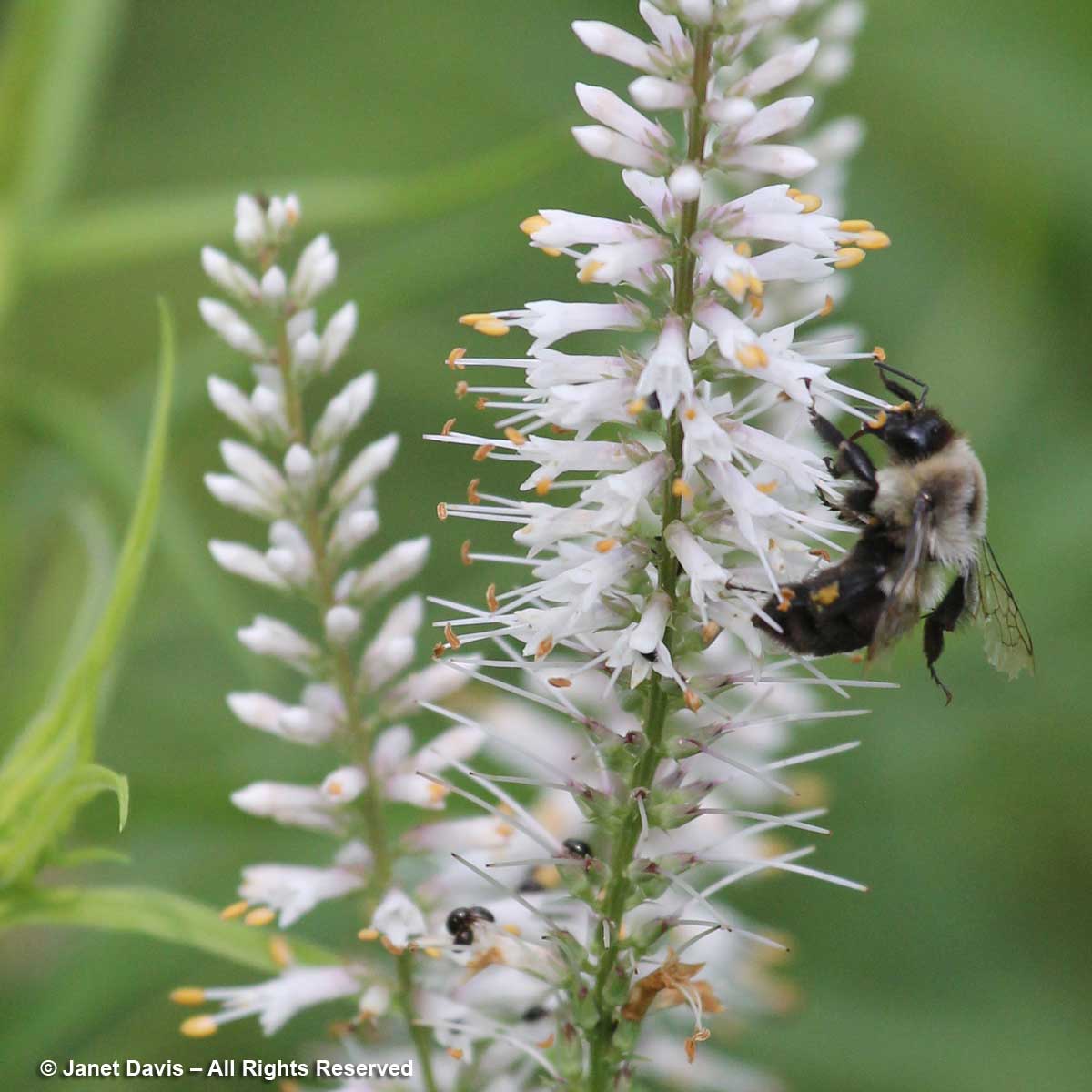
Whether in the garden or a spiky cut flower that dries well, blue sea holly (Eryngium spp.) is a distinctive perennial that also attracts bees, like the carpenter bee (Xylocopa virginica) in my photo, which was my post for December 19th.
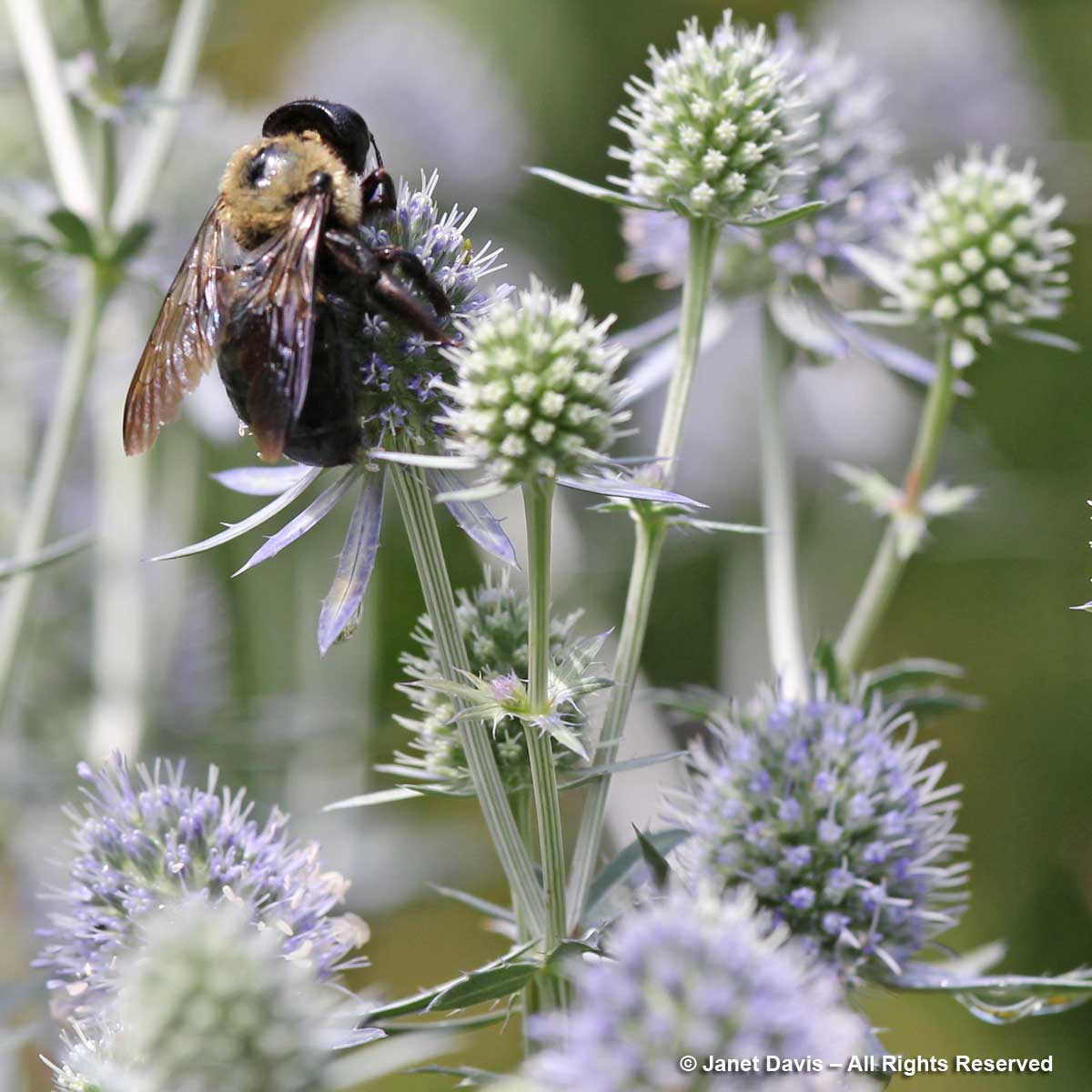
If you live in the northeast, you are familiar with the fuzzy red fruit clusters of staghorn sumac (Rhus typhina), my December 20th pollinator plant. But that fruit – so nourishing for birds and wildlife in winter – would not be produced on the female shrubs without the bees and butterflies of summer foraging on the greenish-yellow flowers, like the white admiral butterfly (Limenitis arthemis) below.
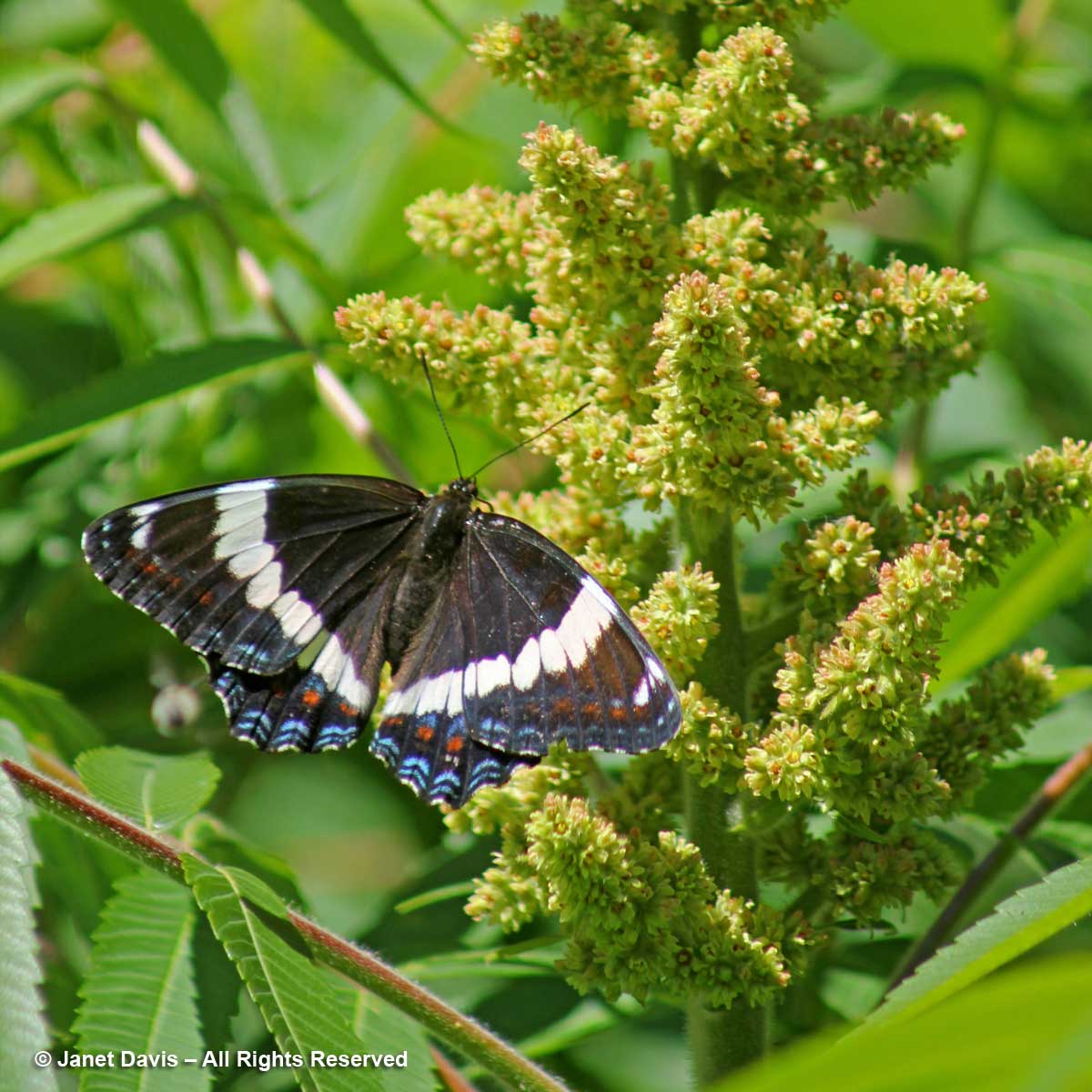
As Christmas week dawned on December 21st, I celebrated the history of the poinsettia (Euphorbia pulcherrima). Alas, all I had in my photo files was a lonely little ant foraging on the yellow nectar glands, not the butterflies and bees that evolved with this holiday shrub in its native Mexico.
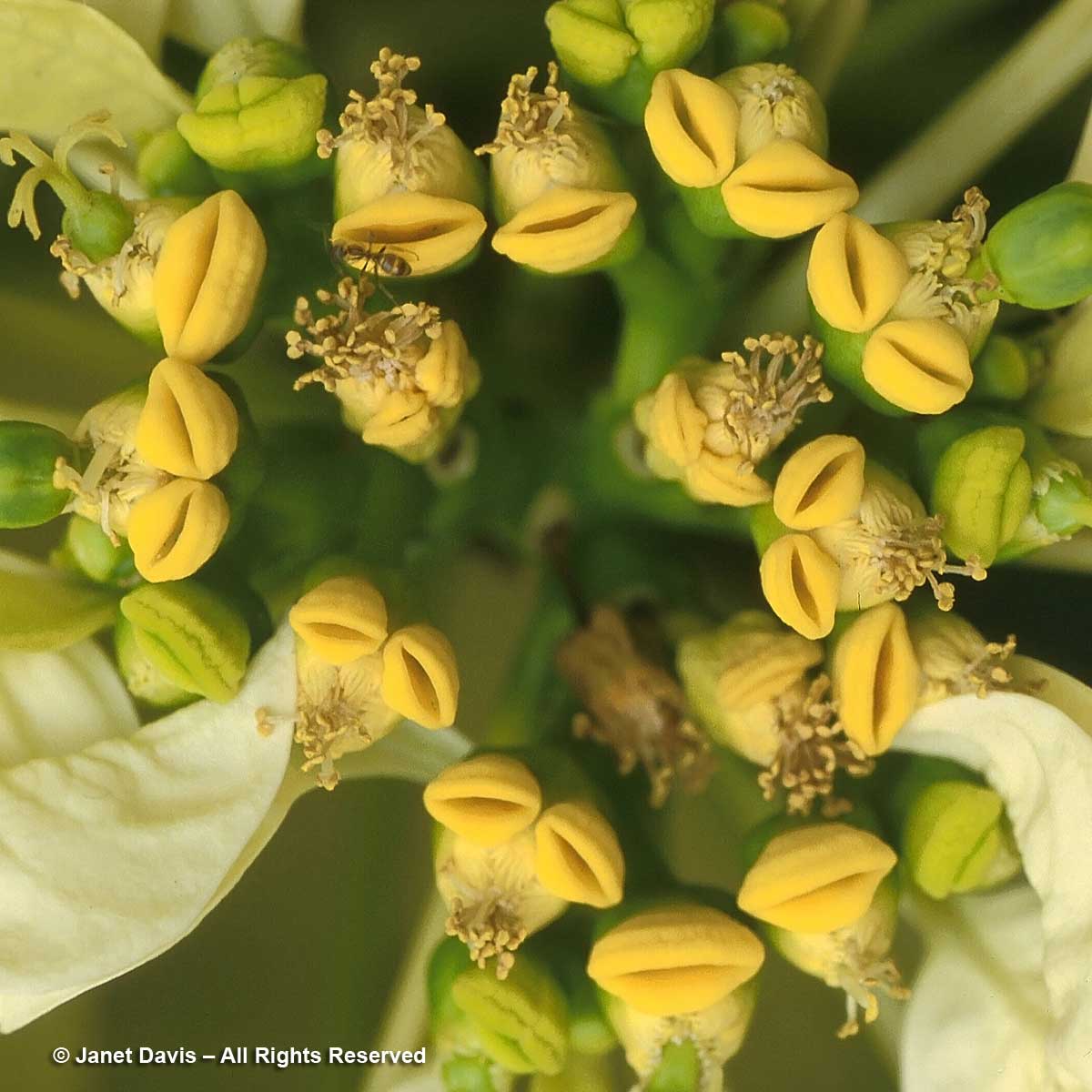
As the big day got a little closer, my mind was on the cranberries I like to buy from our local bogs in Muskoka. Thus on December 22nd my pollinator plant was cranberry (Vaccinium macrocarpon) with a honey bee. Oh! And I included my recipe for my annual Christmas dessert, apple-cranberry cheesecake tart.
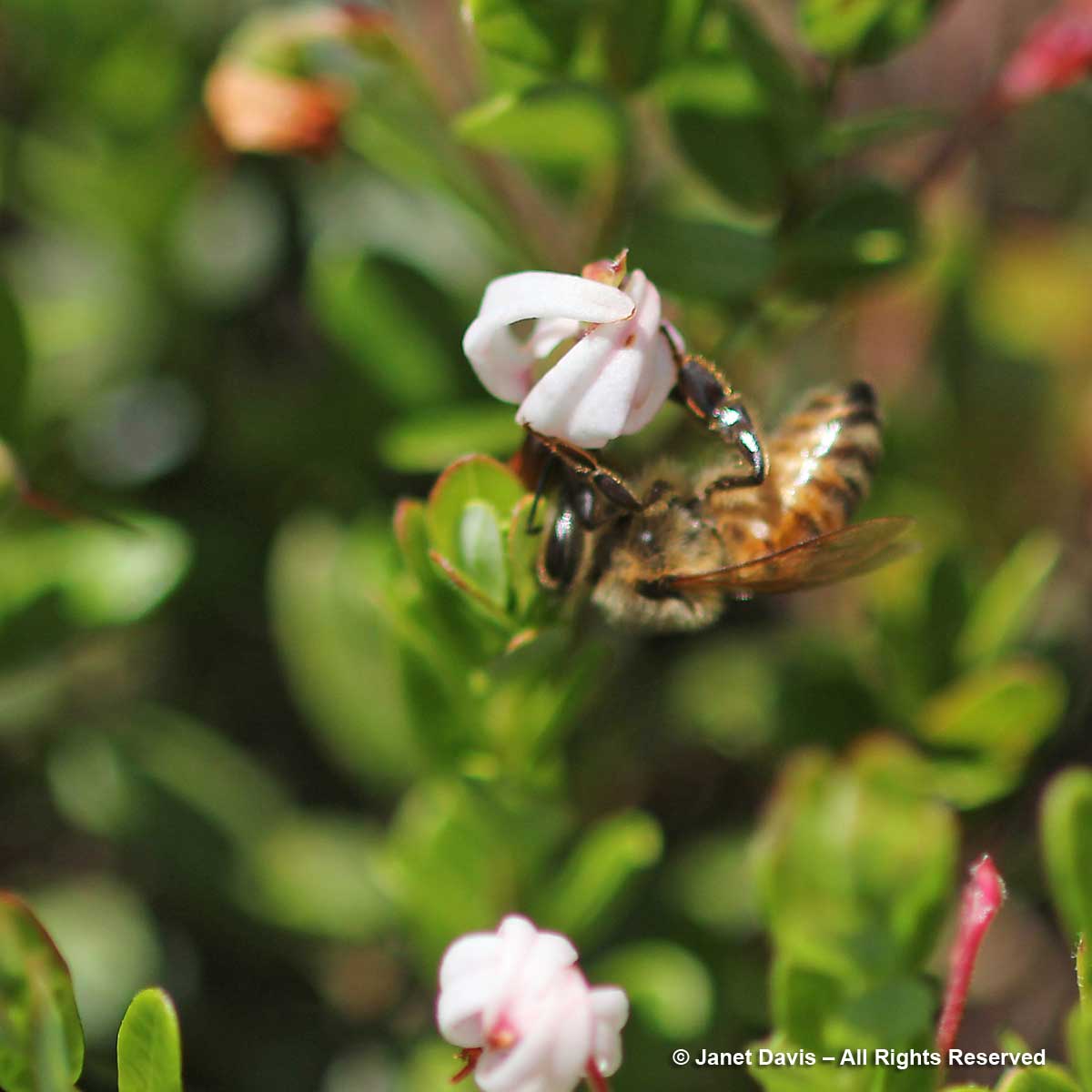
With the Christmas fuss behind me, on December 29th I began a week-long series focusing on “DYCs” or “damned yellow composites” – yellow daisies that are confusing alike to those unfamiliar with variations among the hundreds out there, and all of which I grow in my meadows and naturalistic beds at the cottage. My first entry was heliopsis or false oxeye daisy (Heliopsis helianthoides), a rather aggressive native that I like, even though it always hosts red aphids. Fortunately, it attracts lots of pollinators as well, like the feather-legged scoliid wasp Campsomeris plumipes, below.
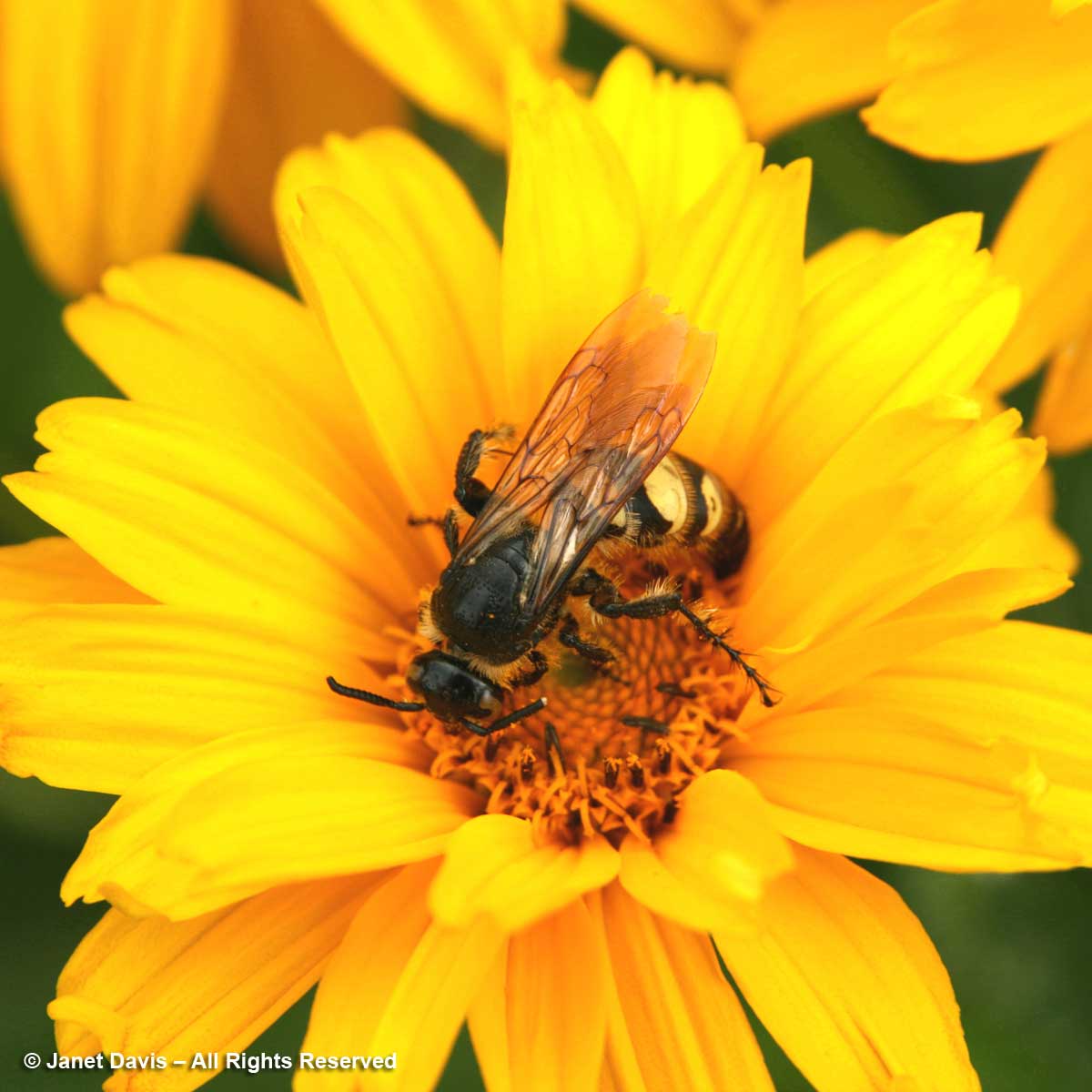
My second “DYC” on December 30th was a favourite yellow daisy for early summer, lanceleaf coreopsis (Coreopsis lanceolata), shown with a hoverfly and friend below. Easy, low-maintenance and a good seed provider for hungry birds too.
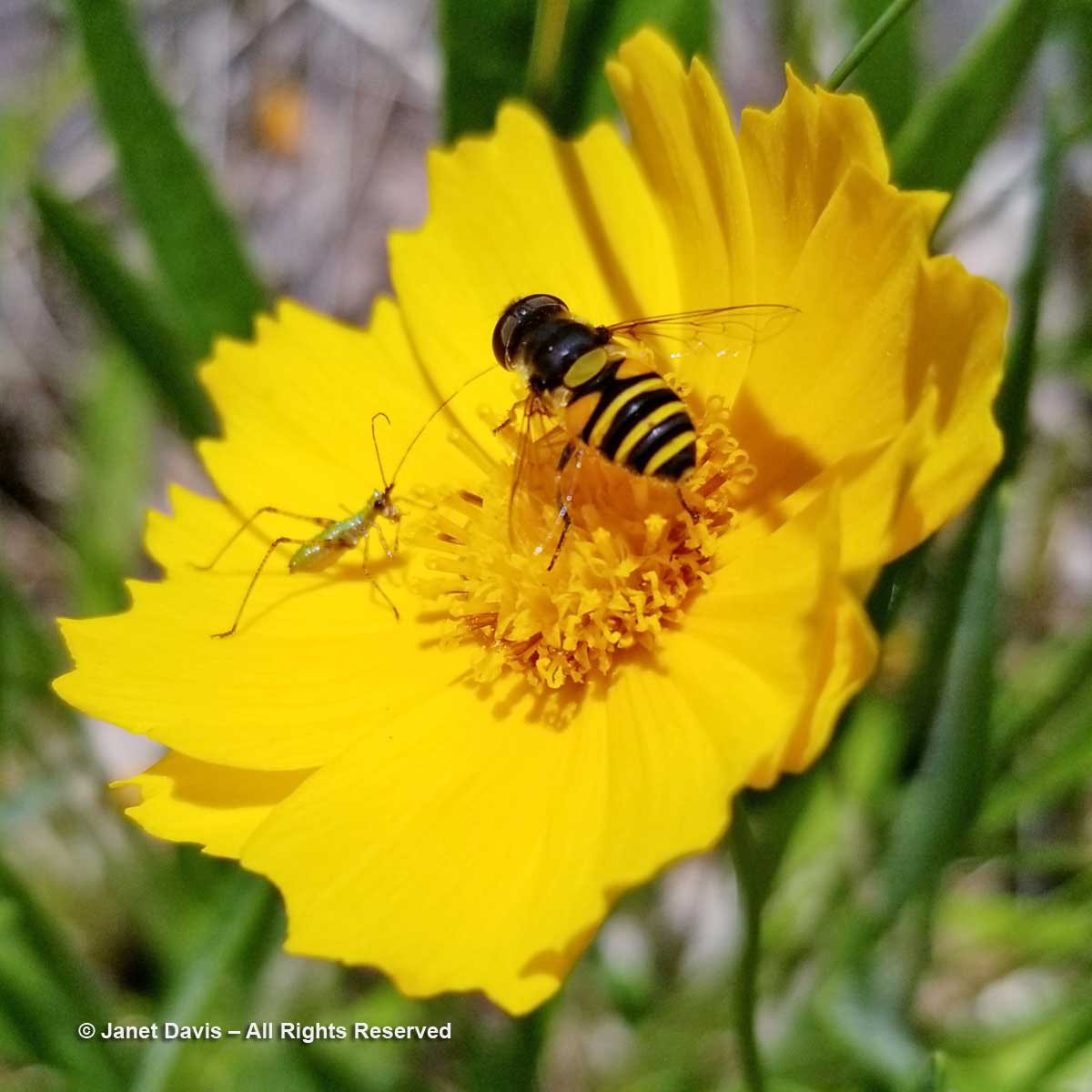
On New Year’s Eve, I finished my pollinators for the month with the willowy-stemmed grey-headed coneflower (Ratibida pinnata)
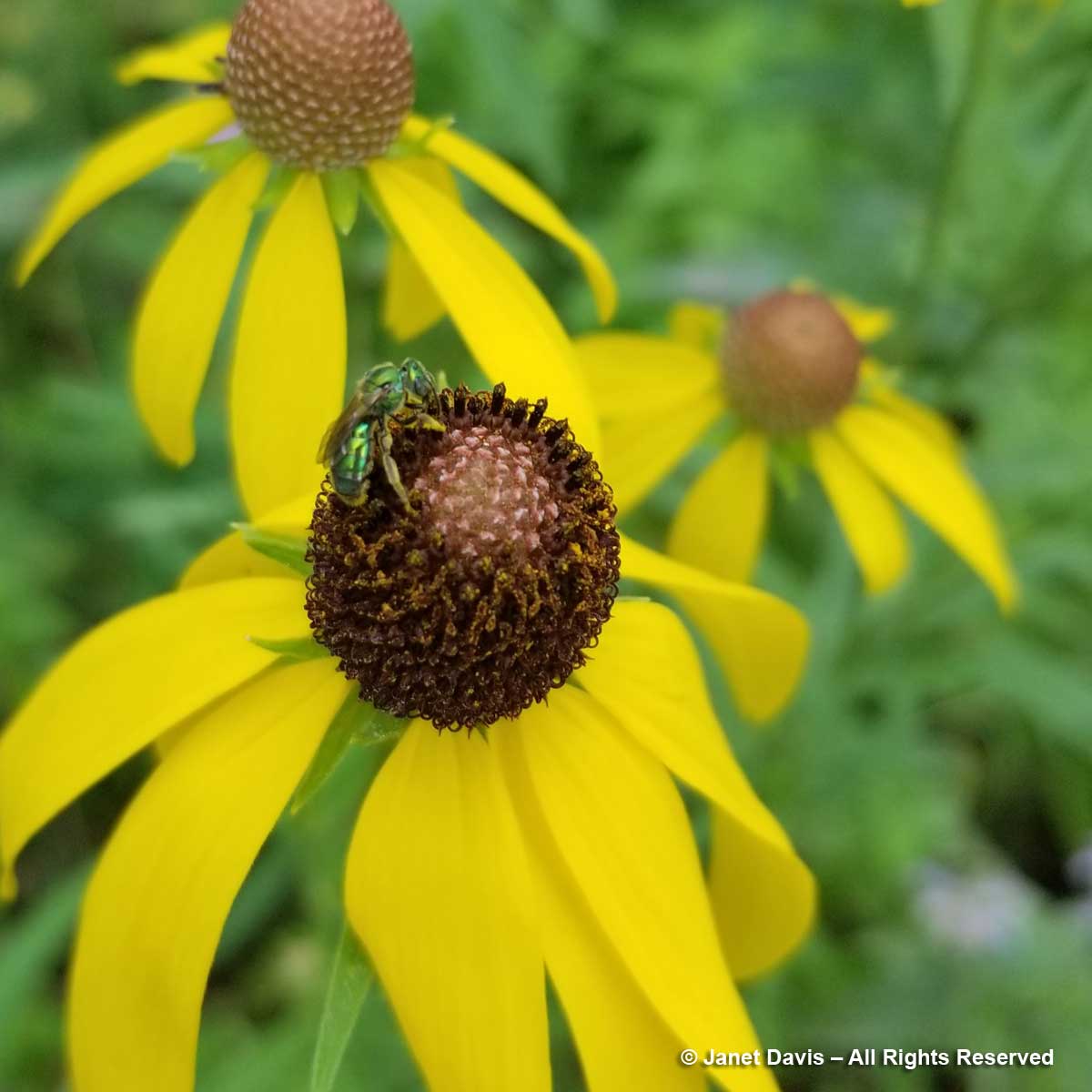
As a special treat to my nerdiest plant friends on Facebook during Christmas week, I created a special ‘botanagram’ puzzle, a word I coined back in 2014 for some particularly challenging online guessing-game fun. I even wrote a blog about my botanagrams. As for this one, I will save you the trouble of puzzling out the 2-word anagram based on the first letter of the genus name of the numbered plants, and provide the solution below the photo montage, which was solved on ‘the night before Christmas’ by Facebook pals in Seattle WA, Raleigh NC, London UK and Athens.
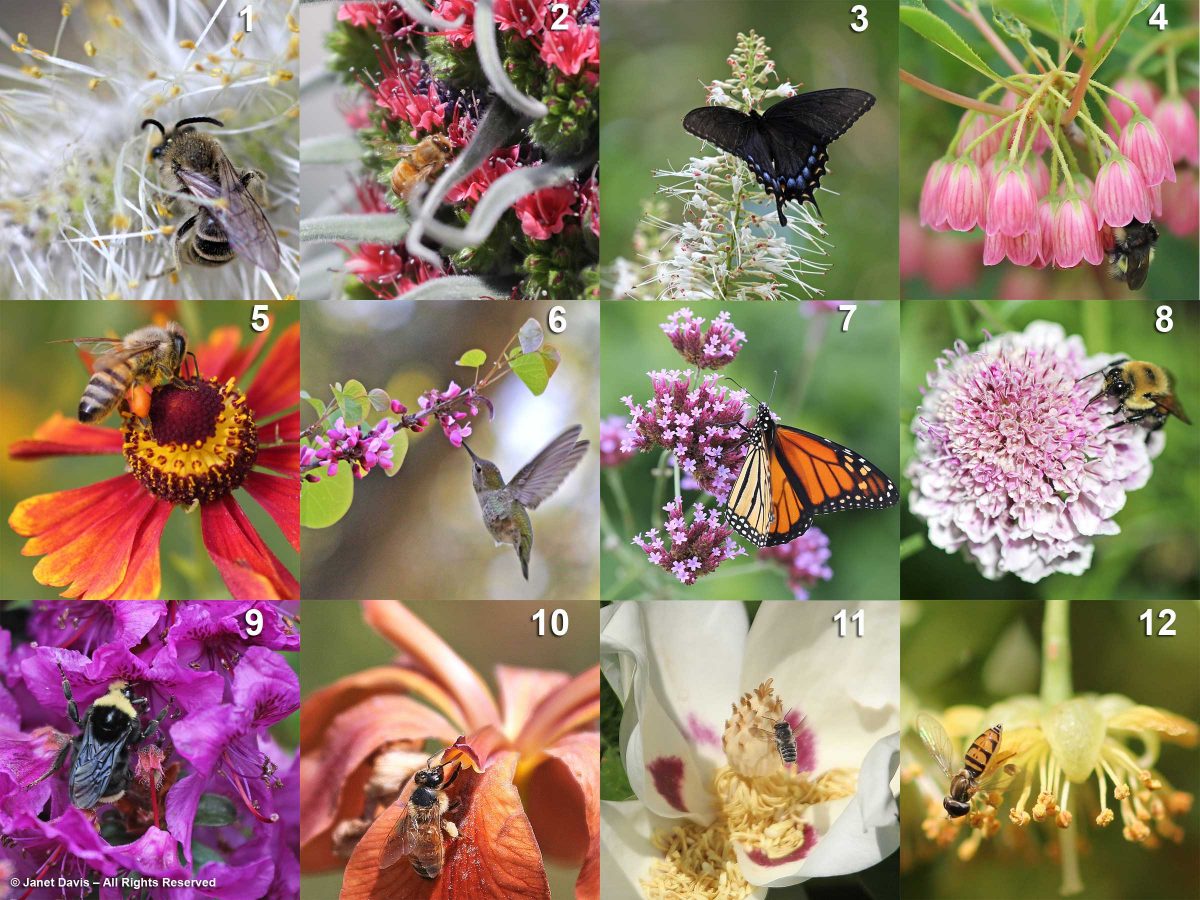
2 – Echium wildprettii with honey bee (Apis mellifera)
3 – Aesculus parviflora with black swallowtail (Papilio polyxenes)
4 – Enkianthus campanulatus with red-belted bumble bee (Bombus rufocinctus)
5 – Helenium autumnale with honey bee (Apis mellifera)
6 – Cercis occidentalis with Anna’s hummingbird (Calypte anna)
7 – Verbena bonariensis with monarch butterfly (Danaus plexippus)
8 – Scabiosa caucasica with brown-belted bumble bee (Bombus griseocollis)
9 – Rhododendron saluense with bumble bee (Bombus vosnesenskii)
10 – Iris fulva with honey bee (Apis mellifera)
11 – Magnolia macrophylla var. ashei with megachilid bee (Megachile)
12 – Tilia x euchlora with (Toxomerus marginatus)
SEAEHCVSRIMT = CHRISTMAS EVE
6-Cercis occidentalis
5-Helenium autumnale
9-Rhododendron saluense
10-Iris fulva
8-Scabiosa caucasica
12-Tilia x euchlora
11-Magnolia macrophylla var. ashei
3-Aesculus parviflora
1-Salix caprea
4-Enkianthus campanulatus
7-Verbena bonariensis
2-Echium wildprettii
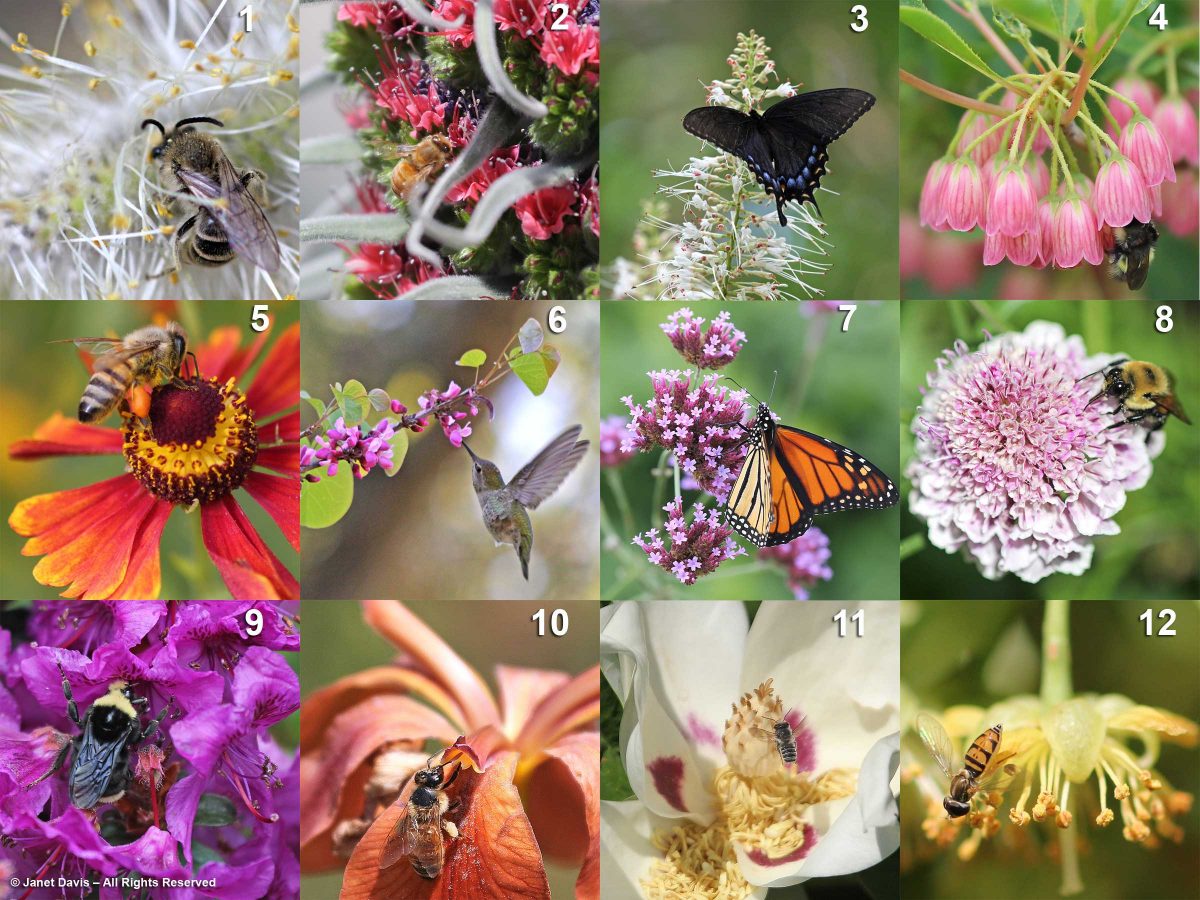
And that was a wrap for December! Click here to read November’s pollinator posts.

This are such wonderful posts and images. I follow them on FB and always enjoy them.
Thanks for the wonderful photos and detailed pollinator info!
Thank you Lisa. I so appreciate the kind words. I’ve been photographing pollinators for so long and it feels good to share them.
Found your blog after reading a Garden Blogger’s Fling post. Truly spectacular photos. As I was looking at your composite groupings kept thinking how I would love to have these as puzzles, to while away winter afternoons, as a colourful reminder of what’s to come.
Thanks, Elaine. It’s my way of marking the months until spring — while sharing my pollinators with readers.